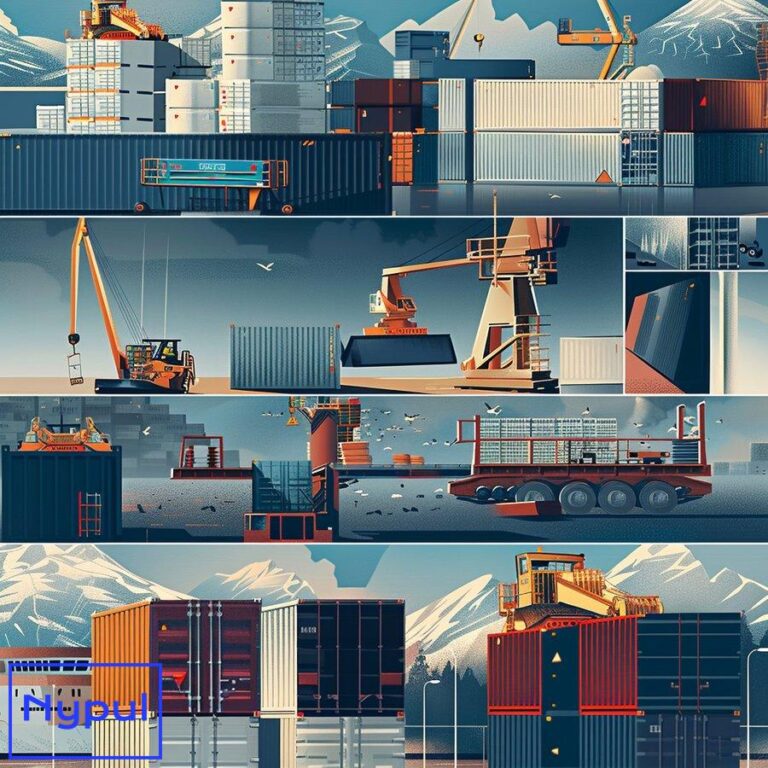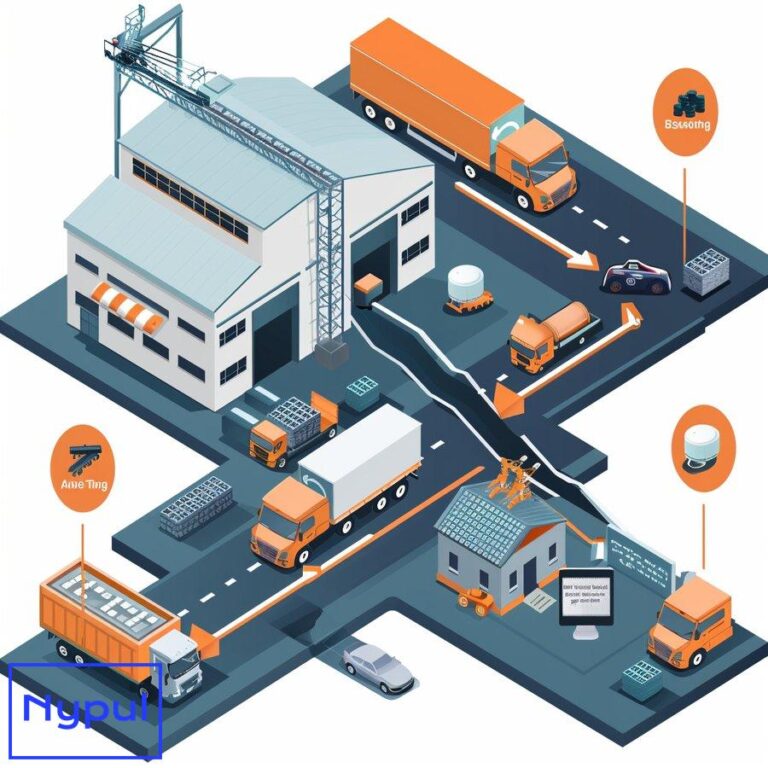How to Quote Intermodal Load
What is intermodal transportation and why is it important?

Intermodal transportation involves moving freight using multiple modes of transport, such as trucks, trains, and ships, in a single journey without handling the goods when changing modes. The cargo is packed into intermodal containers or trailers that can be easily transferred between different vehicles.

Intermodal transport offers several advantages:
Cost efficiency: Combining the best attributes of each mode, like the flexibility of trucks and the long-haul efficiency of rail, intermodal optimizes transportation costs.
Environmentally friendly: Rail and water transport produce fewer emissions per ton-mile compared to trucking. Intermodal leverages these greener modes for the long-haul.
Reliability: With less handling and weather-related delays, intermodal provides more reliable transit times than over-the-road trucking.
Capacity: A single train can haul the equivalent of 280 trucks, helping shippers tap into additional capacity.
Intermodal’s importance lies in enabling shippers to balance cost, speed, and environmental impact. In 2021, intermodal volume in the U.S. reached 18.1 million containers and trailers, underlining its significance in domestic freight transportation.
What factors influence intermodal load pricing?

Several key variables impact the pricing of an intermodal shipment:
Origin and destination: The locations of the shipper and consignee terminals relative to intermodal ramps affect drayage costs. Greater distances from the ramps mean higher rates.
Lane balance: Freight rates tend to be lower for shipping to destinations that are also major origin points, as carriers can easily secure loads for the return trip.
Equipment type: The size and type of intermodal container or trailer used influences the base rate. 20′, 40′, and 45′ are standard sizes.
Commodity: The type of goods being shipped affects pricing due to varying liability and handling requirements. For example, hazardous materials incur additional fees.
Service level: Intermodal transit times range from standard rail service up to expedited and guaranteed options. Faster service commands premium rates.
Accessorials: Added services like overweight loads, pre-pulls, driver loading/unloading, and weekend delivery are priced separately.
Fuel surcharges: Intermodal rates include a fuel surcharge that fluctuates based on the average national price of diesel.
By understanding how each of these factors contributes to the total cost, shippers can make informed decisions when quoting and booking intermodal freight.
How do you gather essential information for an intermodal quote?
To obtain an accurate intermodal transportation quote, you’ll need to compile key details about your shipment:


Pickup and delivery locations: Provide the full addresses, including zip codes, for the origin and destination. This information determines the drayage distance to and from the rail ramps.
Equipment type: Specify the container or trailer size needed, such as 20′, 40′, 45′, or 53′. Also note any special equipment requirements like refrigeration.
Commodity description: Share what you’re shipping, including the NMFC freight class if applicable. This helps carriers assess any unique handling needs and liability.
Shipment weight and dimensions: Provide the total weight and the dimensions of each handling unit, like pallets or crates, to ensure the load will fit in the selected equipment.
Pickup and delivery dates: Indicate your desired pickup and delivery dates, factoring in the estimated transit time for your lane. Communicate any date flexibility you can offer.
Accessorial services: List any additional services required, such as driver load/unload, residential delivery, or liftgate at the destination.
Shipment value: Declare the total value of the goods to determine if additional insurance coverage is needed.
With this information in hand, you’re ready to approach intermodal marketing companies or asset-based providers for quotes tailored to your specific shipment.
How are drayage costs calculated in intermodal shipping?
Drayage, the truck transportation of intermodal containers and trailers between the shipper/consignee and the rail ramp, is a significant component of intermodal pricing. Here’s how drayage costs are determined:
Mileage: The primary factor is the distance from the shipper or consignee to the intermodal ramp. Most carriers use a per-mile rate based on round-trip miles. For example, a 100-mile one-way dray would be priced using 200 miles.
Hourly rates: In major metropolitan areas with heavy congestion, drayage may be priced per hour rather than per mile. The hourly rate accounts for the time spent in traffic.
Equipment type: Drayage rates vary based on the size and type of container or trailer being used. Larger equipment like 53′ containers generally have higher rates.
Weight: Some carriers factor the shipment weight into the drayage rate, with heavier loads costing more due to increased fuel consumption and wear on the truck.
Chassis fees: If the carrier provides the chassis for the container or trailer, a separate chassis rental fee is added to the drayage rate.
Accessorials: Services like pre-pulls (dropping the container at the shipper location prior to the scheduled pickup) and driver loading/unloading incur additional fees.
Fuel surcharge: Drayage rates typically include a fuel surcharge that is adjusted regularly based on the price of diesel.
To illustrate, consider this sample drayage calculation:
| Factor | Details | Cost |
|---|---|---|
| Mileage | 80 miles round-trip at $2.50/mile | $200 |
| Equipment | 40′ container | $50 |
| Chassis fee | Provider-supplied chassis | $25 |
| Pre-pull | Container dropped day before scheduled pickup | $75 |
| Fuel surcharge | 20% of base rate | $40 |
| Total drayage cost | $390 |
By understanding the components of drayage pricing, you can better compare rates and optimize your intermodal shipping costs.
What determines rail transportation costs in intermodal logistics?


The rail portion of an intermodal move, spanning the long haul between origin and destination ramps, represents a significant share of the total cost. Several factors influence intermodal rail pricing:
Mileage: The distance the shipment travels by rail is a key rate determinant. Generally, the cost per mile decreases as the length of haul increases.
Route: The specific rail route used affects the price. High-volume lanes with direct service are typically less expensive than lower-density, multi-stop routes.
Equipment type: Rail rates vary based on the size and type of intermodal container or trailer. Larger equipment like 53′ domestic containers often receives volume discounts.
Commodity: The type of goods shipped can influence rail pricing. Hazardous materials, oversized loads, and high-value cargo may incur additional fees or require specialized equipment.
Service level: Intermodal trains operate on different schedules, from standard service to expedited and premium options. Faster transit times command higher rates.
Fuel surcharges: Rail rates include a fuel surcharge that fluctuates with the price of diesel. The surcharge is typically lower than for truck transportation due to rail’s greater fuel efficiency.
Accessorials: Additional services like overweight loads, refrigeration, and layover charges for storage at the rail ramp are priced separately.
To put this in context, consider an example lane from Chicago to Los Angeles:
| Factor | Details | Cost |
|---|---|---|
| Mileage | 2,015 miles at $0.80/mile | $1,612 |
| Equipment | 53′ domestic container | ($200) |
| Hazardous materials | Additional fee for shipping hazmat | $150 |
| Expedited service | 2-day premium service | $300 |
| Fuel surcharge | 15% of base rate | $242 |
| Total rail cost | $2,104 |
By analyzing the different components of intermodal rail costs, shippers can make informed decisions about equipment selection, service levels, and lane optimization.
How do you account for additional services in an intermodal quote?
Intermodal quotes often include accessorial fees for services beyond the standard port-to-port transportation. Here are common accessorials to consider when pricing your shipment:
Pre-pull: If you need the container delivered to your facility before the scheduled pickup day, a pre-pull fee applies. This charge covers the cost of an extra drayage move.
Driver load/unload: Most intermodal quotes assume the shipper will load and the consignee will unload the container. If you require the driver to perform these tasks, expect an hourly fee based on the time needed.
Detention: Intermodal providers allow a set amount of free time, typically 1-2 hours, for loading and unloading containers. If you exceed this window, detention fees accrue on a per-hour basis.
Layover: If your container remains at the rail ramp beyond the allotted free time, often 24-48 hours, a layover or storage fee is charged per day.
Overweight: Shipping cargo that exceeds the maximum weight limit for the equipment, usually 42,500-45,000 lbs, incurs an overweight surcharge.
Hazardous materials: Intermodal loads containing hazardous materials are subject to additional fees to cover the added liability and special handling requirements.
Lumper fees: If your shipment requires a third-party lumper service to unload the container at the destination, the intermodal provider will pass through this cost.
To illustrate, here’s a sample accessorial breakdown:
| Accessorial | Details | Cost |
|---|---|---|
| Pre-pull | Container delivered 1 day early | $75 |
| Driver unload | 2 hours at $50/hour | $100 |
| Detention | 3 hours at $25/hour after 2 hours free time | $75 |
| Layover | 2 days at $50/day after 48 hours free time | $100 |
| Overweight | Load exceeds 45,000 lbs max weight | $200 |
| Hazardous materials | Fee for shipping Class 3 flammable liquids | $150 |
| Total accessorials | $700 |
By anticipating these additional costs and factoring them into your intermodal quote, you can build an accurate picture of your total shipping expense.
What tools can help in generating accurate intermodal quotes?
Several digital tools are available to streamline the intermodal quoting process and improve quote accuracy:
Intermodal pricing engines: Web-based platforms like Intermodal Toolkit and EZQuote allow you to input your shipment details and receive instant quotes from multiple intermodal providers. These tools compare rates across different equipment types, service levels, and accessorial options to find the best fit for your load.
Transportation management systems (TMS): A TMS automates the freight quoting and booking process by connecting to your carriers’ API feeds. You can enter your load parameters and the TMS will pull in real-time rates from your intermodal providers. The software also stores your contracted rates for easy reference.
Freight marketplaces: Online freight marketplaces like Freightos and Simpli connect shippers with a network of intermodal providers. You can post your load and receive competitive quotes from vetted carriers. These platforms offer tools to compare rates, transit times, and carrier performance metrics.
Intermodal provider portals: Many intermodal marketing companies and asset-based carriers offer online portals where you can enter your load details and receive an instant quote. These portals allow you to book the load, track shipments, and manage billing in one place.
Drayage cost calculators: For the drayage portion of your intermodal shipment, online calculators can provide a quick estimate based on the mileage and equipment type. These tools factor in the current fuel surcharge and any accessorial fees to give you an all-in drayage cost.
By leveraging these digital tools, you can gather and compare intermodal quotes more efficiently and make data-driven decisions about your transportation spend.
How can you effectively negotiate with intermodal service providers?
Negotiating competitive rates with intermodal providers requires a strategic approach. Here are some tips for effective intermodal negotiations:

Leverage your volume: Consolidate your intermodal shipments with fewer providers to increase your bargaining power. Carriers are more likely to offer discounts and favorable terms to shippers with a significant volume commitment.
Be flexible on equipment: If you can ship in multiple equipment types, like 20′, 40′, and 45′ containers, you’ll have more options to choose from. This flexibility allows you to take advantage of carrier capacity imbalances and secure lower rates.
Optimize your lane mix: Balance your intermodal lanes between head-haul and back-haul markets. By providing carriers with round-trip freight, you can negotiate reduced rates and guarantee capacity.
Offer extended lead times: Give your intermodal providers more advance notice of your loads when possible. With extra lead time, carriers can optimize their network and offer more competitive pricing.
Be open to long-term contracts: Intermodal providers prefer the stability of long-term contracts over spot market freight. If you can commit to a provider for a year or more, you’ll have greater negotiating leverage to lock in favorable rates and capacity guarantees.
Use data to your advantage: Come to the negotiating table with data on your shipping patterns, lane volumes, and service requirements. Use this information to justify your rate requests and push for better terms.
Get quotes from multiple providers: Don’t rely on a single intermodal provider. Solicit bids from multiple carriers to ensure you’re getting competitive rates. Use these quotes as leverage in your negotiations.
Collaborate on cost savings: Work with your intermodal providers to find ways to reduce costs and improve efficiency. For example, you might agree to adjust your shipping schedule to help the carrier optimize its asset utilization. These win-win solutions can lead to lower rates for your business.
By following these strategies, you can build strong relationships with your intermodal providers and secure competitive rates for your shipments.






